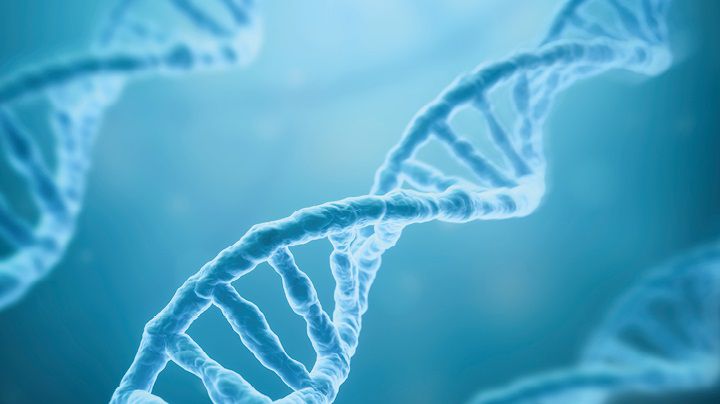Peptide Purification
Reverse phase HPLC and ion exchange chromatography for purification of insulin, vaccines, peptide antibiotics, and custom peptides.
Purify complex peptide mixtures
Proteins are involved in many processes essential to life, such as enzymatic functions, hormone signaling, and transport/storage functions. Therefore, peptide therapeutics form a broad class of important medicines that include insulin, growth hormones, therapeutic enzymes, blood factors, cytokines, and vaccines.
Most manufacturing routes involve living species. Donated human blood, microbial fermentation, and mammalian cell cultures are common sources of peptides. These living processes create complex mixtures with many impurities of widely varying characteristics, which requires a multi-tech approach to purification. DuPont offers several different types of resins that can be used for various steps in peptide purification processes, including reverse phase HPLC resins, ion exchange resins, and adsorbent resins.
DuPont has a long history of manufacturing polymeric resins, building upon the heritage of Rohm & Haas and Dow Chemical. DuPont’s manufacturing expertise helps life science companies consistently produce high-quality peptides through all stages of drug development, from benchtop research to full commercial-scale production.
Purification solutions for high-volume manufacturing
Crude purification
Crude peptide broths contain many impurities such as by-products, residual reactants, and salts. Capture-concentration is a preliminary purification technique that separates the target molecule from most of the impurities. In this coarse separation technique, a polymeric adsorbent resin is used to remove the target peptide and related molecules. This leaves behind impurities that are then removed from the product. Changing the solvent releases the peptide, resulting in a product stream of higher purity that is easier to process in the remaining steps of the purification train. In some cases, the stream may have a higher concentration of peptide, reducing the volume of liquid in the downstream steps.
DuPont™ AmberLite™ adsorbent resins are great choices for “capture” or “capture-concentrate” purification strategies. These polymeric resins are available in a range of pore sizes to accommodate a variety of protein molecular sizes. These resins are chemically robust and can withstand repeated capture/concentrate cycles.
View all products for capture-concentrate in our product finder.
Separate peptides and related impurities with reverse phase HPLC
Peptide processes produce impurities that are like the target drug molecule. These impurities can impact product safety and efficacy of the peptide drug and must be removed to ensure proper drug performance. Desamido-insulins, for instance, are common impurities formed from mild acid hydrolysis of insulin and are common targets in insulin purification. High resolution purification techniques, such as reverse phase HPLC, are required to separate the target from its related impurities.
DuPont™ AmberChrom™ CG resins are polymeric reverse phase HPLC resins that can resolve closely related peptides. Unlike C18 silica, these resins can be used across a full range of pH, providing consistent purification performance over many cycles. The ability to operate in a wide pH range gives manufacturers greater flexibility to tailor their chromatography purification for the unique characteristics of their peptide streams. DuPont™ AmberChrom™ CG resins can also withstand aggressive clean-in-place procedures that can help extend resin lifetime.
View all products for chromatography in our product finder.
Desalting with DuPont™ AmberChrom™ Fine Mesh Ion Exchange Resins and DuPont™ AmberChrom™ Chromatography Resins
Salt removal may be required at different points in a peptide purification process, particularly before lyophilization. Fast and efficient removal of these impurities is important in large-volume industrial manufacturing. DuPont™ AmberChrom™ fine mesh ion exchange resins are available for anion exchange and cation exchange operations. These resins offer a good balance of removal rate and pressure drop. AmberChrom™ Chromatography Resins in the CG product family can be used to desalt peptides in a complex salt mixture. With these resins, the drug molecules are adsorbed onto the resin, allowing the salt streams to flow to waste.
View all products for desalting in our product finder.
Peptide polishing with DuPont™ AmberChrom™ XT Chromatography Resins
Some peptides may require an extra step (polishing) near the end of the purification process to remove impurities that are similar and hard to separate in earlier steps. Reverse phase HPLC with AmberChrom™ XT resins may be used to remove them.
View all products for polishing in our product finder.
-
Capture-Concentrate
Crude purification
Crude peptide broths contain many impurities such as by-products, residual reactants, and salts. Capture-concentration is a preliminary purification technique that separates the target molecule from most of the impurities. In this coarse separation technique, a polymeric adsorbent resin is used to remove the target peptide and related molecules. This leaves behind impurities that are then removed from the product. Changing the solvent releases the peptide, resulting in a product stream of higher purity that is easier to process in the remaining steps of the purification train. In some cases, the stream may have a higher concentration of peptide, reducing the volume of liquid in the downstream steps.
DuPont™ AmberLite™ adsorbent resins are great choices for “capture” or “capture-concentrate” purification strategies. These polymeric resins are available in a range of pore sizes to accommodate a variety of protein molecular sizes. These resins are chemically robust and can withstand repeated capture/concentrate cycles.
View all products for capture-concentrate in our product finder.
-
Chromatographic Separation
Separate peptides and related impurities with reverse phase HPLC
Peptide processes produce impurities that are like the target drug molecule. These impurities can impact product safety and efficacy of the peptide drug and must be removed to ensure proper drug performance. Desamido-insulins, for instance, are common impurities formed from mild acid hydrolysis of insulin and are common targets in insulin purification. High resolution purification techniques, such as reverse phase HPLC, are required to separate the target from its related impurities.
DuPont™ AmberChrom™ CG resins are polymeric reverse phase HPLC resins that can resolve closely related peptides. Unlike C18 silica, these resins can be used across a full range of pH, providing consistent purification performance over many cycles. The ability to operate in a wide pH range gives manufacturers greater flexibility to tailor their chromatography purification for the unique characteristics of their peptide streams. DuPont™ AmberChrom™ CG resins can also withstand aggressive clean-in-place procedures that can help extend resin lifetime.
View all products for chromatography in our product finder.
-
Desalting
Desalting with DuPont™ AmberChrom™ Fine Mesh Ion Exchange Resins and DuPont™ AmberChrom™ Chromatography Resins
Salt removal may be required at different points in a peptide purification process, particularly before lyophilization. Fast and efficient removal of these impurities is important in large-volume industrial manufacturing. DuPont™ AmberChrom™ fine mesh ion exchange resins are available for anion exchange and cation exchange operations. These resins offer a good balance of removal rate and pressure drop. AmberChrom™ Chromatography Resins in the CG product family can be used to desalt peptides in a complex salt mixture. With these resins, the drug molecules are adsorbed onto the resin, allowing the salt streams to flow to waste.
View all products for desalting in our product finder.
-
Polishing
Peptide polishing with DuPont™ AmberChrom™ XT Chromatography Resins
Some peptides may require an extra step (polishing) near the end of the purification process to remove impurities that are similar and hard to separate in earlier steps. Reverse phase HPLC with AmberChrom™ XT resins may be used to remove them.
View all products for polishing in our product finder.
Select publications using our products in peptide purification applications
Bethea, M., et al. (2019) The Islet-Expressed Lhx1 Transcription Factor Interacts with Islet-1 and Contributes to Glucose Homeostasis. American Journal of Physiology Endocrinology and Metabolism 316(3), E397-E409. DOI: https://doi.org/10.1152/ajpendo.00235.2018
Colosimo, D.A., et al. (2019) Mapping Interactions of Microbial Metabolites with Human G-Protein-Coupled Receptors. Cell Host & Microbe 26 (2), 273-282. DOI: https://doi.org/10.1016/j.chom.2019.07.002
Kuna, R.S., et al. (2013) Glucagon-Like Peptide-1 Receptor-Mediated Endosomal cAMP Generation Promotes Glucose-Stimulated Insulin Secretion in Pancreatic b-Cells. American Journal of Physiology Endocrinology and Metabolism 305(2), E161–E170. DOI: https://doi.org/10.1152/ajpendo.00551.2012
Cabanne, C., et al. (2009) Efficient Purification of Recombinant Proteins Fused to Maltose-Binding Protein by Mixed-Mode Chromatography. Journal of Chromatography A, 1216(20), 4451-4456. DOI: https://doi.org/10.1016/j.chroma.2009.03.048
Hunter, A.K., et al. (2008) Use of Cyclohexanedimethanol as a Nonflammable Organic Solvent for Industrial Scale Reversed Phase Chromatography. Journal of Chromatography A, 1202(1), 107-110. DOI: https://doi.org/10.1016/j.chroma.2008.06.032
Maples, K.R., et al. (2007) Novel Semisynthetic Derivative of Antibiotic Eremomycin Active against Drug-Resistant Gram-Positive Pathogens Including Bacillus Anthracis. Journal of Medicinal Chemistry 50(15), 3681-3685. DOI: https://doi.org/10.1021/jm0700058
Kajihara, Y., et al. (2004) Prompt Chemoenzymatic Synthesis of Diverse Complex-Type Oligosaccharides and Its Application to the Solid-Phase Synthesis of a Glycopeptide with Asn-Linked Sialyl-undeca- and Asialo-nonasaccharides. Chemistry A European Journal 10(4), 971-985. DOI: https://doi.org/10.1002/chem.200305115
Ray, M.V., et al. (2002) Production of Salmon Calcitonin by Direct Expression of a Glycine-Extended Precursor in Escherichia coli. Protein Expression and Purification 26(2), 249-259. DOI: https://doi.org/10.1016/s1046-5928(02)00523-5
Chu, Alexander H. T. (1992) Process for Making Vancomycin US5149784, United States Patent Office. https://patentimages.storage.googleapis.com/ab/a7/9f/6d628731f3aebf/US5149784.pdf
Cartier, P.G., et al. (1990) The Utility of Polymeric Reversed Phase Packings for the Purification of Peptides, Proteins and Antibiotics in Pyle, D.L. (eds) Separations for Biotechnology 2. Springer, Dordrecht. DOI: https://doi.org/10.1007/978-94-009-0783-6_30
Want to try a product?
View the Peptides & Proteins page of our e-store.
Explore other bioprocessing applications

We enable complicated separations for drug synthesis resulting in better outcomes for patients and life science companies.

Purification resins for PCR diagnostics, medical imaging, radiopharmaceuticals, and clinical diagnostics.

Design trityl-on and trityl-off oligonucleotide purification processes for high yield and high purity with DuPont™ AmberChrom™ Chromatography Resins.

DuPont™ AmberLite™ adsorption resins and ion exchange resins for isolating, purifying, and concentrating polyphenols, alkaloids, and heparin.

Learn more about DuPont's polymeric resins for purifying vitamins, steroids, and aminoglycoside and beta-lactam antibiotics.


